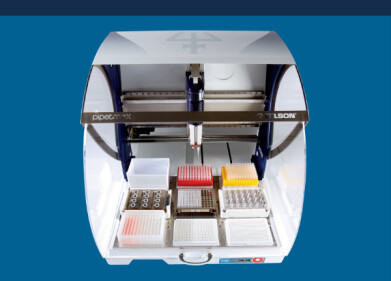Laboratory Products
What is the Science Behind Sandcastles?
Feb 02 2021
With summer on the horizon, researchers at the University of Manchester have uncovered new insight into the science behind sandcastles. The team focused on the mechanics of a microscopic phenomenon called capillary condensation, which drives processes such as friction, corrosion, lubrication, adhesion and stiction. As well as playing a key role in technological processes used in the pharmaceutical, food and microelectronics industries, capillary condensation is also a critical component of bucket-and-spade fun.
Understanding capillary condensation
Often described as a hidden law of nature, capillary condensation occurs when water vapour spontaneously condenses between connected surfaces or inside porous materials. At just a few molecules thick, little has been known about the science behind capillary condensation, until now.
Led by Nobel Laureate Andre Geim, the research team engineered tiny artificial capillaries small enough to support the water vapour condensation process. The study was titled 'Capillary condensation under atomic-scale confinement' and dives deeper into the 150-year-old Kelvin equation, which has previously been used to explain the phenomenon.
Challenging a 150-year old equation
For decades, scientists have questioned the relevance of the Kelvin equation as its macroscopic principles don’t correlate with the molecular scale of capillary condensation. The University of Manchester team has now proven sceptics wrong, creating molecular-sized capillaries using layers of atomically flat mica and graphite crystals. The crystals were sandwiched between narrow strips of graphene to create a tri-layer model that proves the Kelvin equation does apply to even the smallest capillary condensation processes.
“This came as a big surprise. I expected a complete breakdown of conventional physics," comments lead author of the study Dr Qian Yang. "The old equation turned out to work well. A bit disappointing but also exciting to finally solve the century old mystery. So we can relax, all those numerous condensation effects and related properties are now backed by hard evidence rather than a hunch that 'it seems to work so therefore it should be OK to use the equation.”
Praise for Lord Kelvin
"Good theory often works beyond its applicability limits," says Geim. "Lord Kelvin was a remarkable scientist, making many discoveries but even he would surely be surprised to find that his theory -- originally considering millimetre-sized tubes -- holds even at the one-atom scale. In fact, in his seminal paper Kelvin commented about exactly this impossibility. So, our work has proved him both right and wrong, at the same time.”
From sandcastles to food safety, science helps us understand more about the world we live in. Stay up to date with the latest advances with articles such as ‘Addressing Proper HACCP Implementation’ using supermarket giant Lidl as a case study.
Digital Edition
ILM 49.5 July
July 2024
Chromatography Articles - Understanding PFAS: Analysis and Implications Mass Spectrometry & Spectroscopy Articles - MS detection of Alzheimer’s blood-based biomarkers LIMS - Essent...
View all digital editions
Events
ACS National Meeting - Fall 2024
Aug 18 2024 Denver, CO, USA
Aug 25 2024 Copenhagen, Denmark
Aug 28 2024 Phnom Penh, Cambodia
Sep 04 2024 Chiba, Tokyo, Japan
Sep 04 2024 University of Warwick, Coventry, UK





24_06.jpg)












